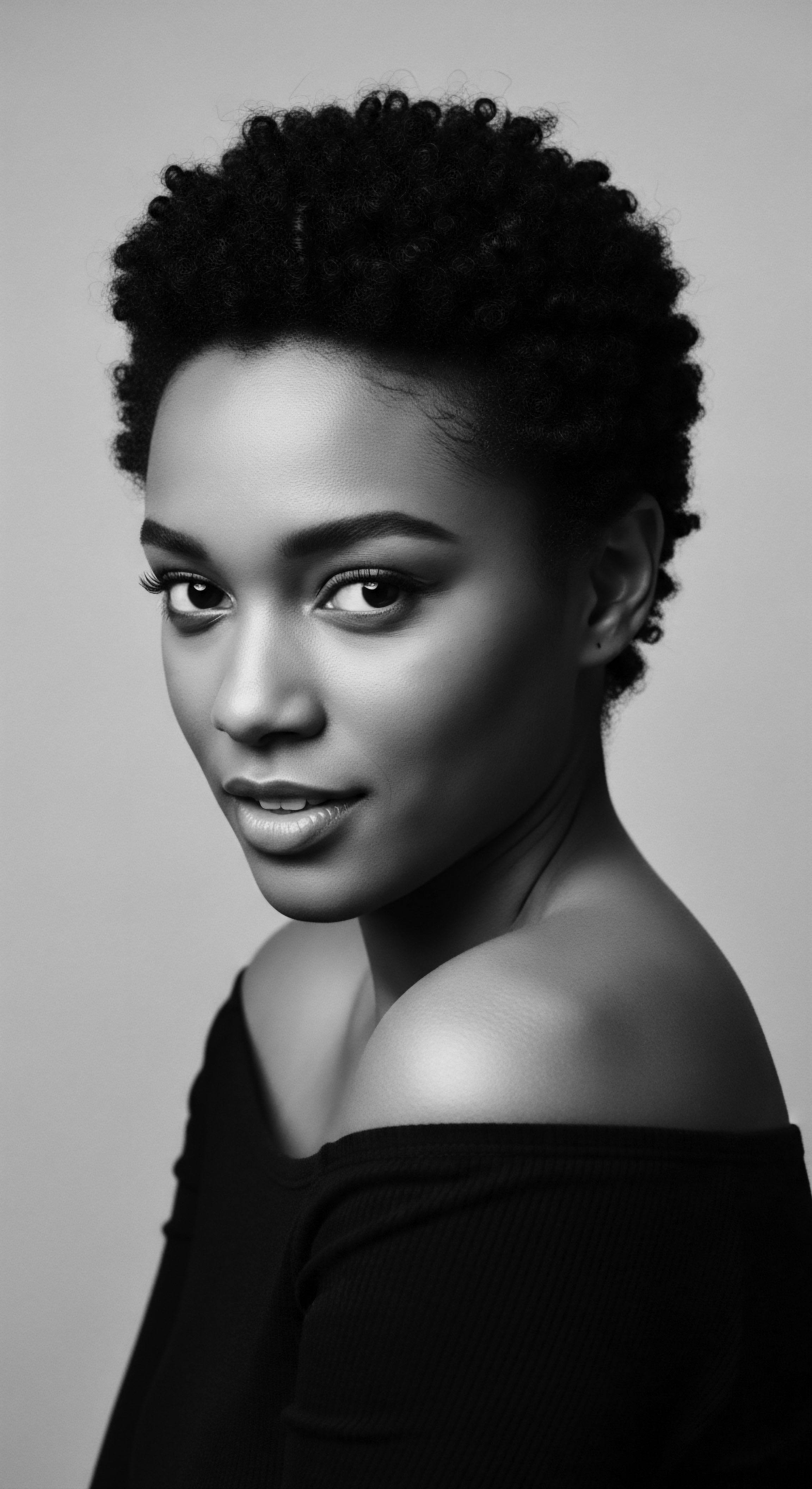
Roots
The very strands upon our heads, for those of us whose hair dances in coils, kinks, and waves, carry not just biological blueprint but the indelible markings of heritage . They whisper stories of ancestral lands, of sun-drenched savannas and humid forests, of hands that braided defiance and adorned dignity. Yet, this inherent richness, this soulful legacy, has long met the unforgiving gaze of a world built upon different ideals, a world that measured beauty by a straight, flowing ideal.
The struggle textured hair faced against Eurocentric notions of beauty is not a simple tale; it is a profound saga etched into the very fabric of identity, a narrative of resilience, adaptation, and an enduring connection to one’s deepest roots. It is a dialogue between the innate design of a hair strand and the imposed aesthetic, a conversation where our hair, a living archive, has consistently held its own.
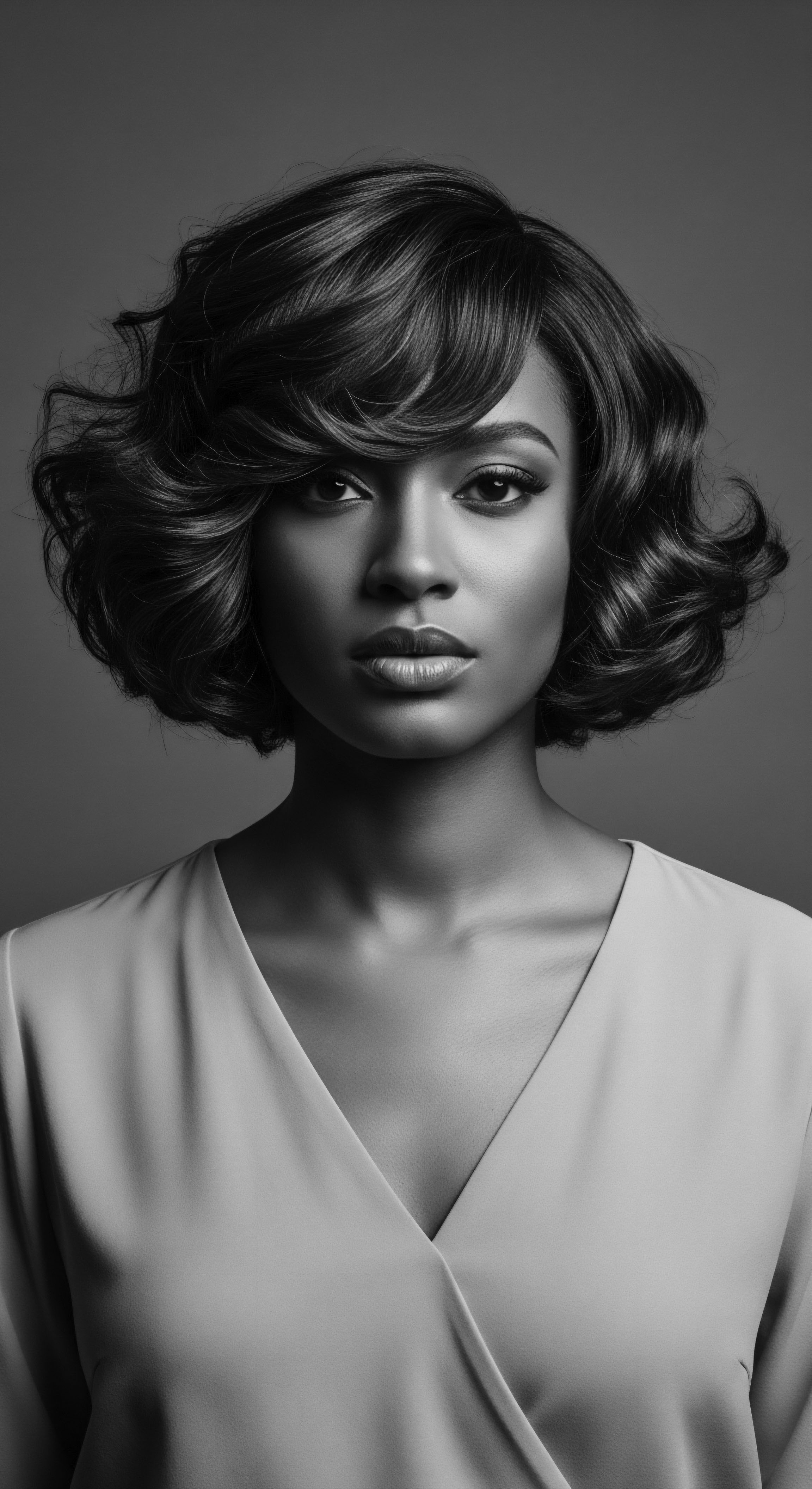
Hair Anatomy and Its Ancestral Echoes
To truly grasp the historical challenges, we must first comprehend the magnificent architecture of textured hair itself. Unlike its straight counterparts, coily and kinky hair typically possesses an elliptical or flat cross-section, causing it to curl and spiral. This unique shape dictates its growth pattern, its strength, and its vulnerability.
The cuticle, the outermost layer of the hair shaft, tends to be more open in textured hair, contributing to its porosity and potential for dryness. These biological characteristics, far from being flaws, are adaptations honed over millennia, perfectly suited to diverse climates and environments, offering protection and allowing for vibrant, voluminous styles that would stand as statements of community and artistry.
Historically, this biological truth guided ancestral practices. Ancient African civilizations understood hair not merely as adornment but as a spiritual conduit, a marker of status, age, marital state, and tribal identity. Hair was a sacred map, each braid, twist, or intricate pattern telling a story of lineage, achievement, or spiritual connection.
The tools and techniques employed were those born of careful observation and respect for the hair’s natural inclinations. Combs carved from wood, botanical oils pressed from native plants, and clays gathered from the earth formed the bedrock of care, ensuring the hair remained supple and strong in its natural state.
Textured hair, in its biological design and ancestral care, embodied profound cultural meaning long before colonial gazes sought to redefine its worth.

Shifting Classifications and Inherited Biases
The imposition of Eurocentric beauty standards initiated a systematic devaluing of textured hair, transforming its biological uniqueness into a supposed defect. Classification systems, originally rooted in scientific observation, morphed into tools of racial hierarchy. What began as a description of hair types devolved into a judgment of worth.
The very language used to describe textured hair became fraught with negative connotations, reflecting the prevailing societal biases. Terms like “kinky” and “nappy,” once possibly descriptive, became epithets, weaponized to enforce a hierarchy of beauty.
This shift created an internal struggle within communities of African descent. The pressure to conform, to make one’s hair appear “acceptable” by European standards, led to the widespread adoption of methods that often compromised hair health and undermined cultural practices. The straightness of hair became a proxy for civility, education, and social acceptance, a devastating burden for those whose natural hair did not conform.
- Cultural Devaluation ❉ Traditional hairstyles, once symbols of pride and identity, faced ridicule and condemnation.
- Economic Pressure ❉ Access to employment or social mobility often hinged on hair conforming to a straightened ideal.
- Internalized Bias ❉ The constant messaging led many to perceive their natural hair as unmanageable or unattractive.
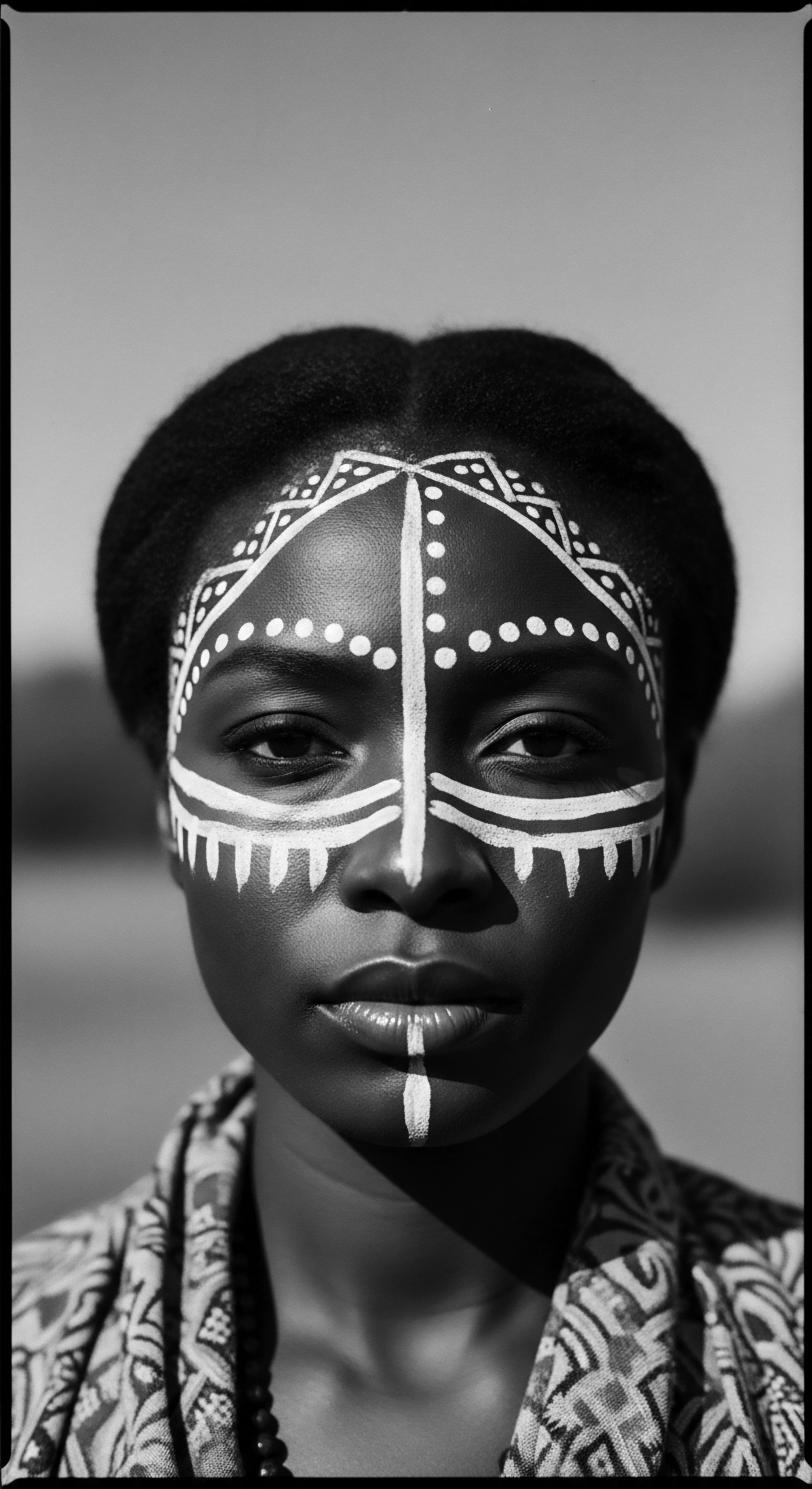
The Essential Lexicon and Its Reclamation
The language used to describe textured hair has been a battleground. For generations, the dominant lexicon mirrored the Eurocentric standard, lacking terms that genuinely celebrated the nuances of coils and kinks. Scientific descriptions, often clinical and detached, rarely captured the lived reality or the cultural significance of these hair types. The common understanding, absorbed from societal norms, centered on a linear understanding of hair, rendering multi-dimensional textures as “difficult” or “unruly.”
In response, a quiet revolution has taken root, a reclamation of language that honors textured hair heritage . This involves not just inventing new terms, but reviving older, culturally resonant ones, and investing existing terms with new, positive meanings. The deliberate choice to use words that affirm the beauty and complexity of textured hair is an act of defiance against historical devaluing. It speaks to a conscious effort to rebuild a lexicon that serves and celebrates, rather than diminishes.
| Historical European Perspective "Unruly," "nappy," "coarse" |
| Reclaimed/Ancestral Perspective Coily, kinky, springy, dense |
| Historical European Perspective Hair requiring "taming" |
| Reclaimed/Ancestral Perspective Hair requiring nourishment, understanding, protection |
| Historical European Perspective Straightness as the ideal |
| Reclaimed/Ancestral Perspective Texture as a symbol of diversity, identity, and heritage |
| Historical European Perspective The language we use shapes our perception, a crucial step in decolonizing beauty ideals. |

Ritual
The historical struggles of textured hair against Eurocentric beauty standards did not simply manifest as a conceptual battle; they directly impacted the tangible practices of care and styling. From the very tools used to the techniques employed, a profound tension arose between ancestral practices, born of a deep understanding of natural hair, and the imposed dictates of a foreign aesthetic. This tension shaped daily rituals, transforming moments of care into acts of subtle resistance or, at times, reluctant conformity. Yet, through it all, the spirit of preserving Textured Hair Heritage persisted, adapting and evolving.

Protective Styling as Ancestral Ingenuity
Long before the term “protective styling” gained modern currency, communities across the African diaspora practiced techniques designed to shield hair from environmental elements, promote growth, and maintain health. These styles, often intricate and long-lasting, were functional as much as they were artistic. Braids, twists, and locs held profound cultural significance, signaling group affiliation, marital status, and social standing. These practices were not about altering the hair’s inherent texture but rather about working with its natural tendencies to create resilient, beautiful forms.
The advent of Eurocentric beauty standards often cast these ancestral protective styles as unprofessional, untidy, or even threatening. This forced many to abandon practices honed over generations for methods that aimed to straighten or minimize their natural hair. The historical irony stands clear ❉ what was traditionally a mark of care and cultural pride became a barrier in a society that valued uniformity and a specific aesthetic. The internal conflict, for many, was immense, torn between a legacy of intricate beauty and the immediate pressures of assimilation.
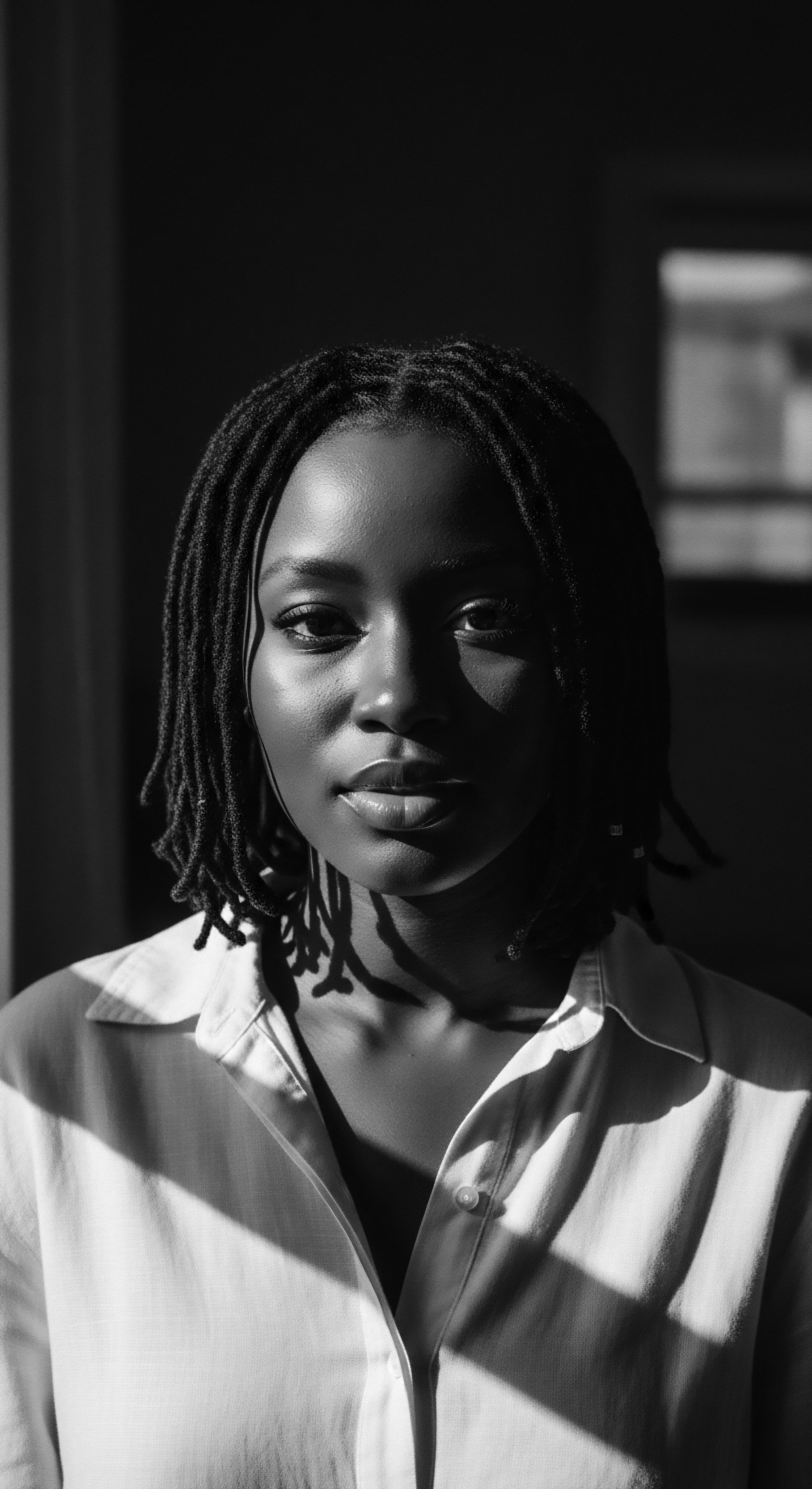
Natural Styling and Definitions
The path of natural styling and hair definition, as we understand it today, is a continuum reaching back to ancient traditions and forward through periods of suppression and reclamation. Historically, without the aid of chemical alterations, textured hair was defined through methods that honored its natural coil and curl. Water, natural oils, and the precise manipulation of strands were the primary tools. These methods celebrated the hair’s volume and spring, allowing its authentic character to shine.
However, the rise of Eurocentric beauty standards systematically diminished the appreciation for these natural textures. The ideal became sleek, smooth, and flowing, a direct counterpoint to the inherent qualities of coily and kinky hair. This cultural pressure gave rise to the demand for tools and techniques that could artificially straighten hair, leading to the proliferation of hot combs, pressing irons, and later, chemical relaxers. These methods, while offering temporary conformity, often caused damage, compromising the very health and integrity of the hair that ancestral practices sought to protect.
The shift from honoring natural texture to chemically altering it reflects a profound historical pressure to conform to Eurocentric ideals.

Wigs and Hair Extensions
The history of wigs and hair extensions within communities of African descent is complex, intertwined with both ancestral custom and colonial influence. In many African cultures , wigs and extensions, crafted from natural fibers or human hair, served ceremonial purposes, signified status, or provided protective styling. They were extensions of identity, chosen and worn with purpose and artistic intention.
Yet, in the context of Eurocentric beauty standards, wigs and extensions took on a different dimension. For some, they became a means to simulate the favored straight hair texture, offering a temporary escape from societal judgment. This did not erase the historical struggle but rather added a layer of adaptation.
The choice to wear a wig or extensions could be an act of defiance, a fashion statement, or a strategy for survival within a beauty hierarchy that penalized natural texture. The continuous evolution of these practices highlights the adaptability and creative spirit inherent in textured hair heritage .
- Ancestral Adornment ❉ Historically, wigs and extensions functioned as status symbols or for ritualistic display in certain communities.
- Colonial Adaptation ❉ During periods of intense pressure, they served as tools for assimilation or protection from discrimination.
- Modern Expression ❉ Today, they are often chosen for versatility, style, or to give natural hair a rest, reflecting a broadened understanding of hair freedom.

Relay
The historical struggles of textured hair against Eurocentric beauty standards extend beyond superficial aesthetics, penetrating the realms of legislation, economic opportunity, and psychological well-being. This enduring conflict represents a complex interplay of power, identity, and the persistent legacy of colonialism, forcing communities to navigate a world that often criminalized or demeaned their natural state. Understanding this dynamic requires a deeper analysis, drawing upon socio-historical research and the lived experiences of those whose hair became a battleground for dignity and self-acceptance.
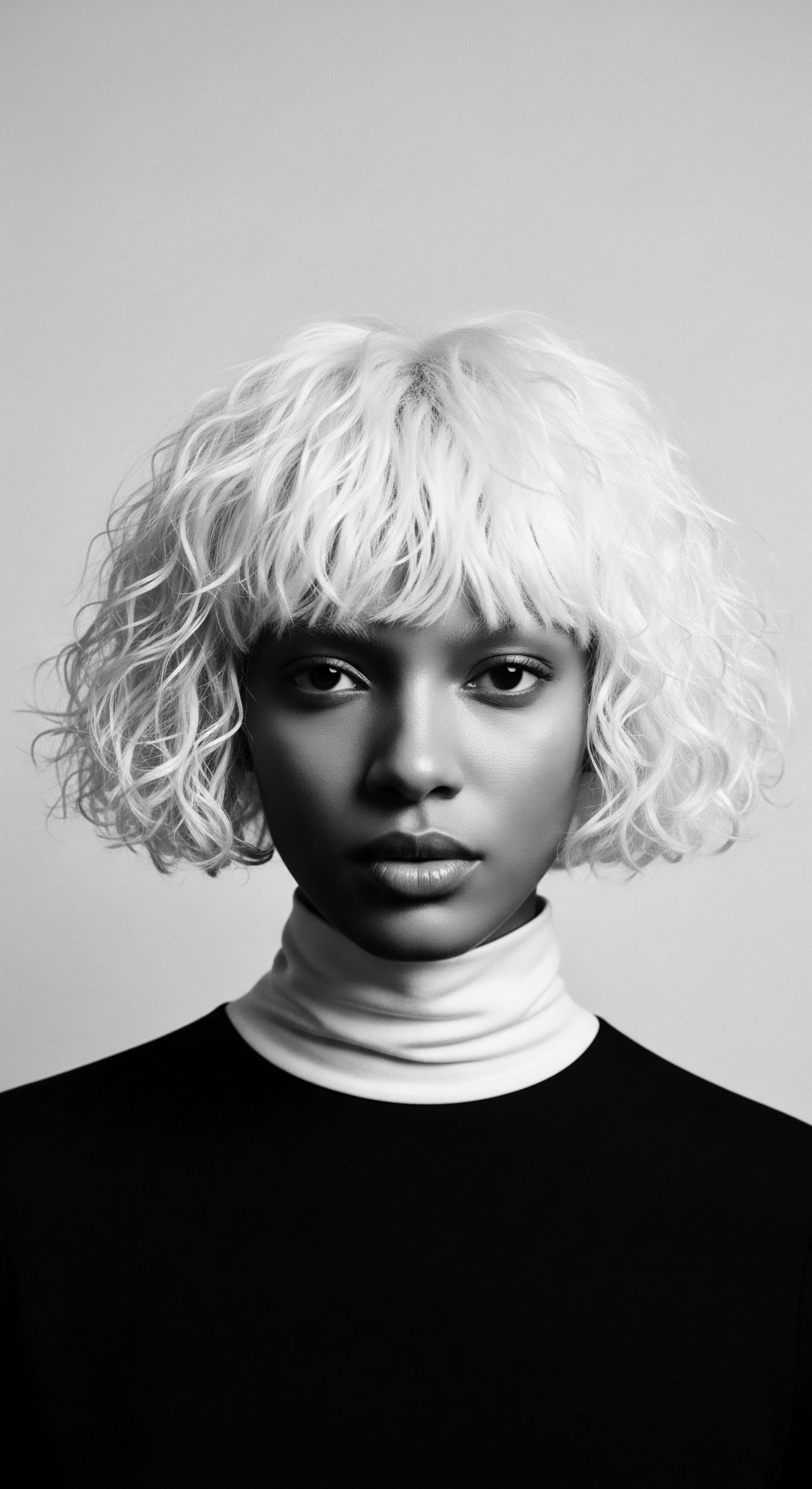
Legislation and the Policing of Hair
One of the most overt manifestations of this historical struggle is found in legal statutes and social codes designed to control Black hair. The infamous Tignon Laws , enacted in Spanish colonial Louisiana in 1786 by Governor Esteban Miró, stand as a stark historical example. These laws compelled free women of color to cover their hair with a tignon—a scarf or handkerchief. The legislation aimed to visually distinguish these women from white women and suppress their perceived attractiveness, which was seen as a threat to the established racial and social order (White, 1998, p.
119). This was not merely about fashion; it was a deliberate attempt to police identity and enforce a rigid social hierarchy through the manipulation of a deeply personal aspect of being. Such laws underscored the profound discomfort with the inherent beauty and expressiveness of textured hair when it did not align with a dominant aesthetic. The tignon, intended as a mark of subjugation, often became a canvas for elaborate styling, a quiet act of defiance where women continued to express their artistry and heritage through the very means intended to suppress it.
Beyond formal laws, informal social codes and workplace policies frequently mandated hair conformity. For generations, individuals with textured hair faced employment discrimination, being deemed “unprofessional” if their hair was not straightened or altered to mimic European textures. This pervasive bias created economic barriers and psychological distress, forcing many to choose between economic survival and cultural authenticity. The very notion of “professionalism” became subtly, yet overtly, coded with Eurocentric hair ideals, demonstrating a systemic challenge to the inherent nature of textured hair.
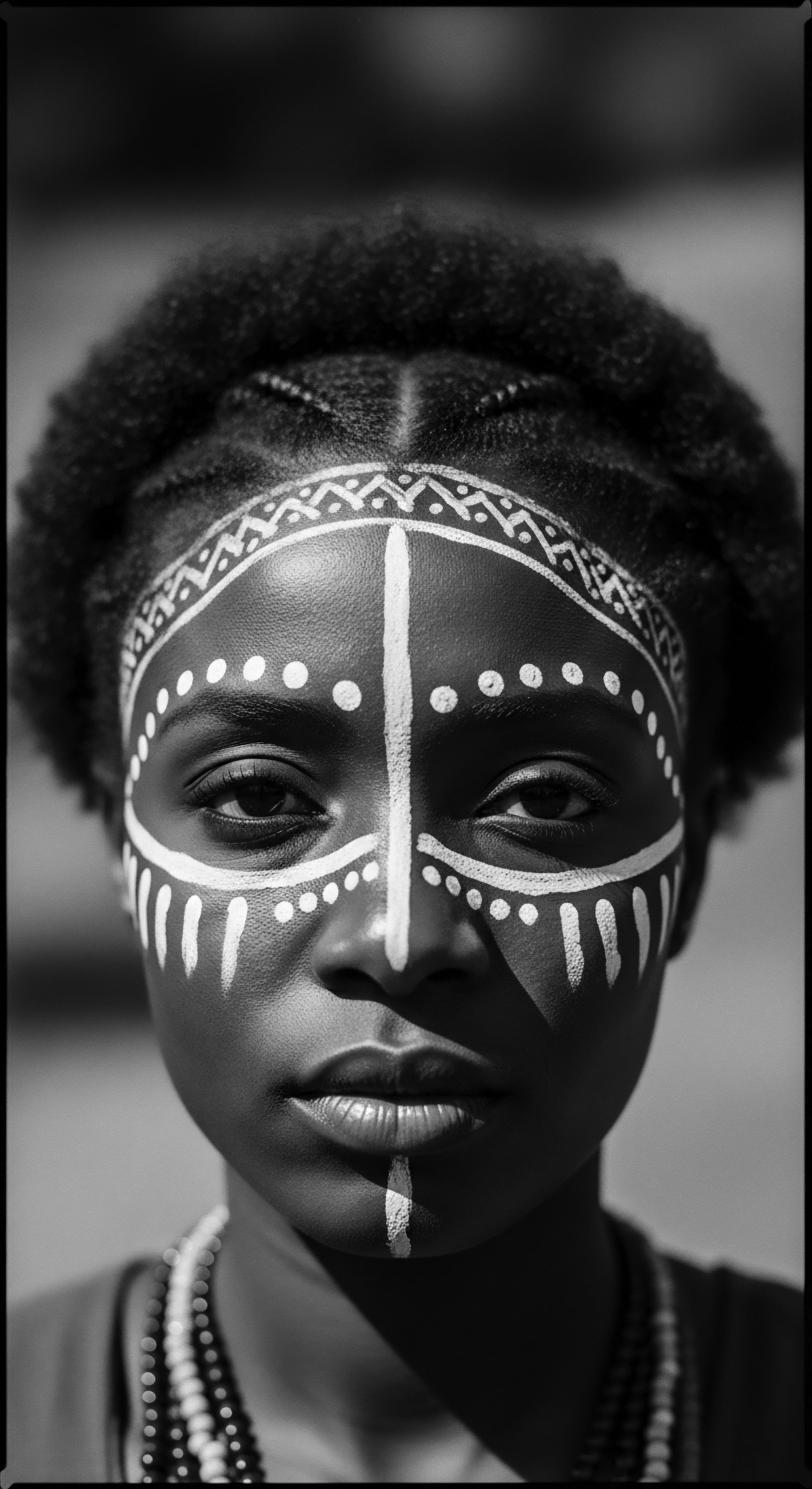
The Chemical Revolution and Its Legacy
The late 19th and 20th centuries witnessed the popularization of chemical relaxers, products designed to permanently straighten textured hair. While initially marketed as tools of convenience and modernity, their widespread adoption cannot be separated from the prevailing societal pressure to conform. For many, chemical straightening became a near-necessity to navigate professional and social landscapes that implicitly, or explicitly, rejected natural Black hair.
This trend, while offering a form of temporary social mobility, often came at a physical cost. The harsh chemicals caused scalp burns, hair breakage, and long-term damage, a physical manifestation of the struggle against an imposed standard.
The narrative surrounding relaxers represents a poignant chapter in the textured hair heritage journey. It points to a period where, despite the pain and damage, the perceived benefits of assimilation—acceptance, opportunity—outweighed the desire for natural hair expression for countless individuals. Yet, this era also laid the groundwork for the modern natural hair movement, as subsequent generations sought to reclaim hair health and cultural pride, rejecting the chemical interventions that had long dominated the Black hair care landscape.
The historical prevalence of chemical relaxers illustrates the deep societal pressures to conform, often at the expense of hair health and ancestral connection.
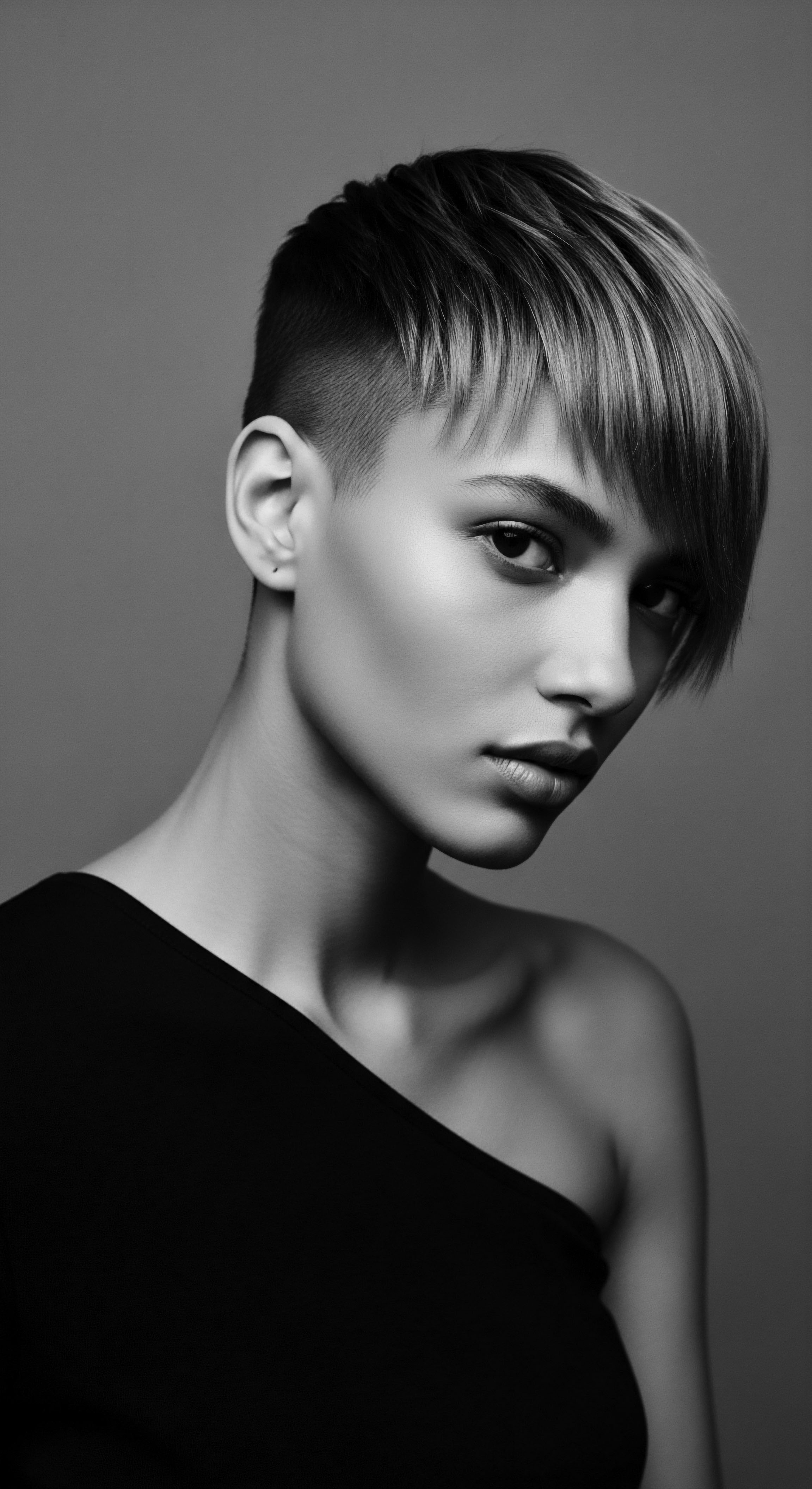
Reclaiming Authenticity and Cultural Value
The contemporary natural hair movement stands as a powerful testament to the enduring resilience of textured hair heritage . It represents a collective decision to reject Eurocentric beauty standards and affirm the innate beauty and versatility of coils, kinks, and waves. This reclamation is not merely a stylistic choice; it is a profound act of self-acceptance, cultural affirmation, and a re-engagement with ancestral wisdom. It is a recognition that true beauty resides in authenticity, not in conformity to externally imposed ideals.
The movement encourages a deeper understanding of textured hair’s biological needs, drawing parallels with traditional care practices that prioritized nourishment and gentle handling. It recognizes that the “struggle” was not with the hair itself, but with the societal gaze that judged it. This shift in perspective is crucial, allowing for a space where historical traumas are acknowledged, and a future built on respect, celebration, and genuine freedom of expression can be forged.
This journey of reclaiming authenticity continues to redefine beauty standards, not by discarding others, but by fiercely affirming its own. It speaks to the power of collective action, where individual choices contribute to a larger cultural shift, ensuring that the heritage of textured hair is not just preserved, but celebrated and passed on as a beacon of identity and strength.

Reflection
Our exploration of the historical struggles faced by textured hair against Eurocentric beauty standards concludes not with a sense of defeat, but with a profound appreciation for the enduring spirit of textured hair heritage . Each coil and kink, each wave and twist, holds within it echoes of perseverance—a legacy woven from resilience, cultural wisdom, and unwavering identity. From the ancient adornments that marked status and spirituality to the quiet acts of resistance against colonial decrees, hair has always been more than a mere biological attribute. It has been a living canvas for expression, a silent scream against oppression, and a vibrant declaration of self.
The path has been arduous, marked by legislative attempts to control, economic pressures to conform, and pervasive social biases that sought to diminish. Yet, through these trials, the soul of a strand, imbued with ancestral memory, refused to break. The journey from forced concealment to triumphant reclamation is a testament to the unyielding bond between a people and their physical being.
It reminds us that understanding our hair’s deep past helps us truly appreciate its present vitality and its future possibilities. This ongoing narrative, rich with lessons and triumphs, is not just history; it is a living, breathing archive, inviting us to remember, to honor, and to continue the legacy of celebrating textured hair in all its inherent glory.

References
- White, Shane. Stylin’ ❉ African American Expressive Culture from Its Beginnings to the Zoot Suit. Cornell University Press, 1998.
- Byrd, Ayana D. and Lori L. Tharps. Hair Story ❉ Untangling the Roots of Black Hair in America. St. Martin’s Press, 2001.
- Banks, Ingrid. Hair Matters ❉ Beauty, Power, and Black Women’s Consciousness. New York University Press, 2000.
- Hooks, bell. Black Looks ❉ Race and Representation. South End Press, 1992.
- Mercer, Kobena. Welcome to the Jungle ❉ New Positions in Black Cultural Studies. Routledge, 1994.
- Patton, Tracey Owens. African-American Hair as Culture and Commerce. Palgrave Macmillan, 2006.
- Sims, Lowell J. The Black Hair Handbook ❉ A Guide to the Art and Science of Black Hair Care. Agate Bolden, 2011.
